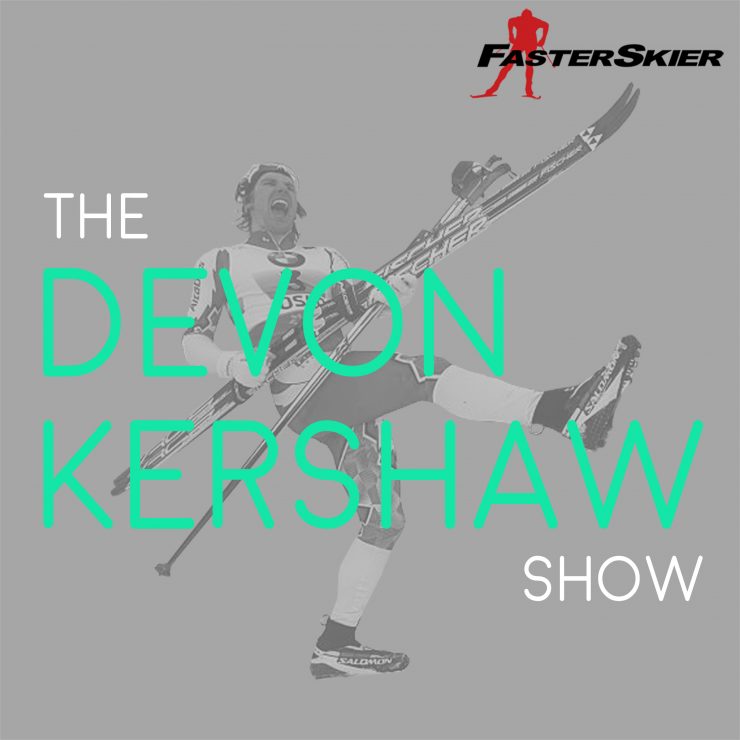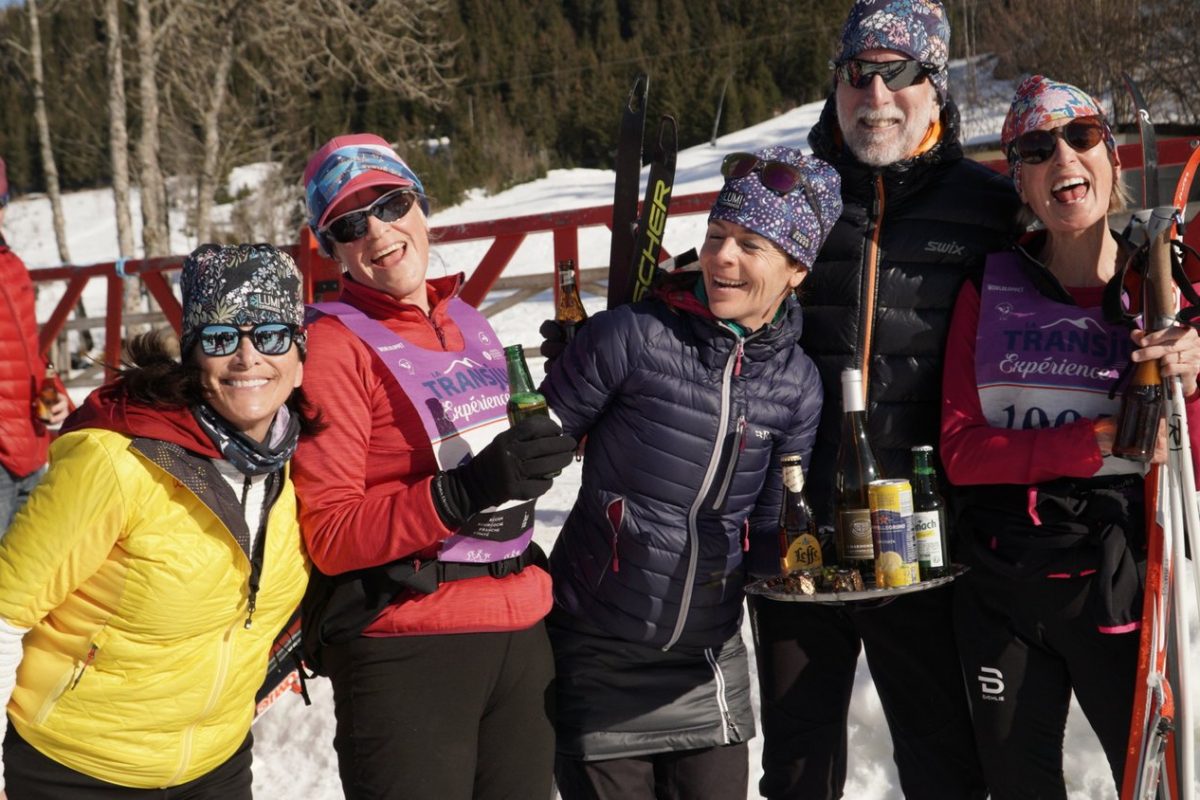
ANCHORAGE — Watching training sessions at a Regional Elite Group camp, the summer training series held around the country for the nation’s top junior skiers, is one part tantalizing glimpses of the future of American skiing, ten parts the cumulative reality of a lot of focused work in the present. These kids are fast, they are committed, and they are strong. But long-term success in endurance sport takes time, and they know it. Judging from the final two practices in a long and rainy week at Alaska REG camp, the future may be some ways off, but it is bright indeed.
Let’s back up a little. This year’s Alaska REG camp was held in Anchorage during the week of July 18. Comparable camps occurred elsewhere in June and July for the three other regions of a sprawling nation: in Truckee, California, for the Western Region; in Marquette, Michigan, for the Central Region; and in Craftsbury, Vermont, for the Eastern Region. Athletes, aged roughly 14 to 20, are picked on the basis of their performance in Junior National races, state high school races, and higher-level USSS races.
One or more of U.S. Ski Team coaches Greta Anderson (Development Team Coach), Bryan Fish (Cross Country Sport Development Manager), and Kristen Bourne (D-Team Coach) were present at all four camps. They were assisted in each region by a who’s who of junior coaches from local clubs.
The supporting cast in Anchorage included Galen Johnston, Jack Novak, Eric Strabel, Jan Buron, Eliza Rorabaugh, Naomi Kiekintveld, Seiji Takagi, Jenny Kimball, Trond Flagstad, Adam Verrier, and Kristen Bourne (coaches); Billy Crumm (strength session); Ja Dorris, Joey Caterinichio, and Laarni and John Power (dinner hosts); and Shannon Donley (registration). Between coaches and athletes, all of Alaska Nordic Racing, Alaska Pacific University Nordic Ski Center, Alaska Winter Stars, Nordic Ski Club of Fairbanks FXC, and University of Alaska Anchorage were represented here last week.
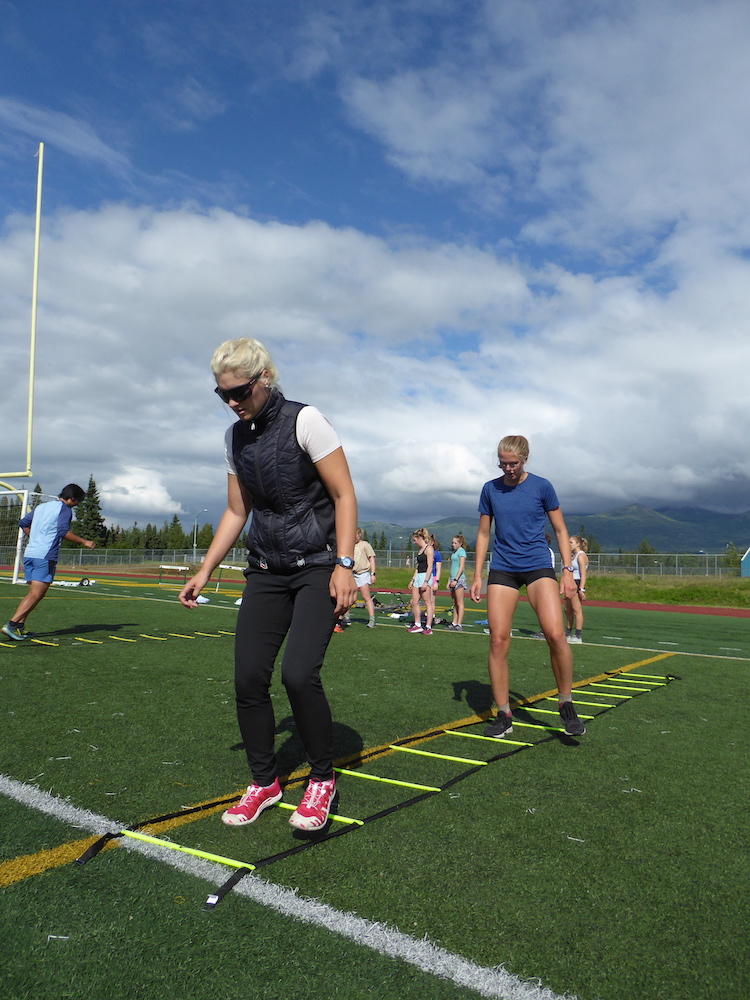
The camp schedule is not easy, reflecting the fact that it selects from high-achieving juniors who are already comfortable training twice a day. The tests typically make headlines; the canonical REG week contains an uphill run, a classic rollerski uphill doublepole test, and a skate rollerski agility sprint, results of which are combined with USSS/NRL points to select high-performing athletes to attend a national team camp in Park City in the fall. This year’s Alaska camp was no exception, as all three tests featured and results were recorded.
But camp is more than just the tests, says Anderson. Speaking in an in-person interview last Friday afternoon, while apparently tireless athletes began a spirited soccer match at the other end of the Service High School infield just moments removed from agility drills and strides, the USST coach emphasized that the testing is only one aspect of camp, alongside of broader training value and the chance for athletes from different clubs and regions to make connections.
As for the training value, Anderson noted, “One of the challenging things about camp is that at times it can feel like just testing, or very testing-centric, very evaluation-centric. And what we’re trying to do at these camps is to make sure that there’s a lot of training value. Coaches bring that training value; organizationally, the way we set up that environment can add training value; the thing that gives the most benefit for training is getting really good athletes together, who may otherwise only see each other in competition, to compete head-to-head, to train head-to-head, to do some intensity workouts together that they might otherwise not be able to get together and do. So I see a lot of value there.”
And as for those connections, Anderson is asked what U.S. junior skiing is doing well at present.
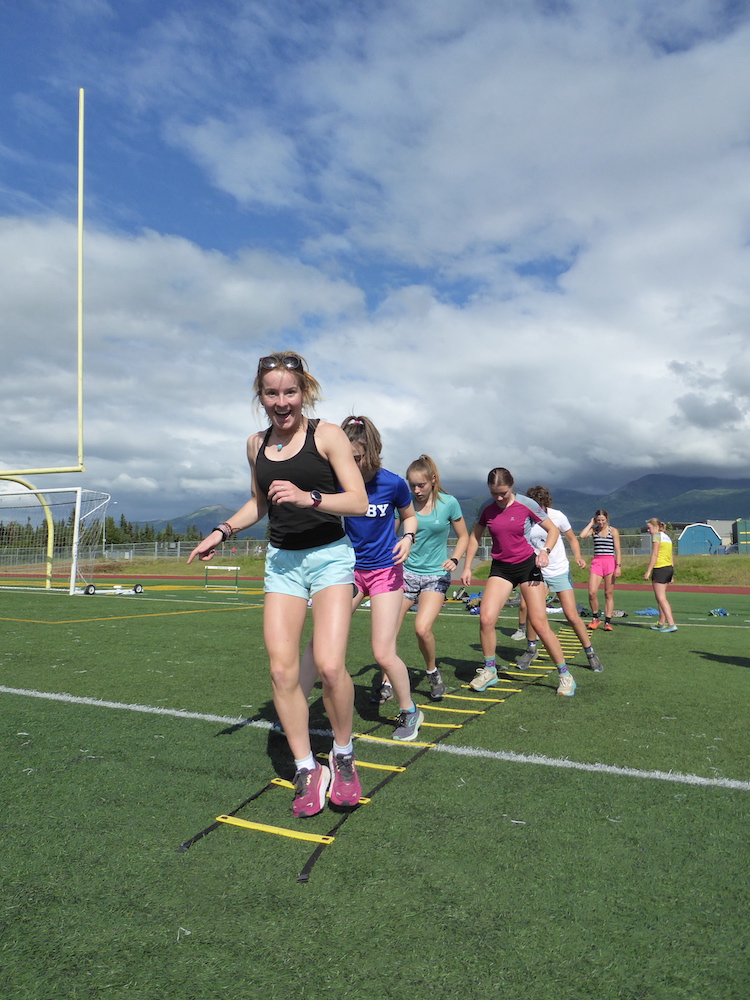
“Working together really well,” the Development Team Coach immediately replies. “I think at the club level and the athlete level, you see a lot of athletes across clubs training together and working hard. They’re pretty cohesive right now. We’re getting stronger as a nation. Peer-to-peer coaching is getting to be more of the norm, where athletes will train together and say, Oh, I’m trying this, or, I’m working on this. So we’re starting to have more conversations about skiing, which I think – the larger picture there is that our culture as a ski nation is getting stronger. And we’re starting to see the results come with that.”
Anderson is also impressed by the level of commitment that she sees in the country’s various clubs. “One of the things I’ve noticed a lot with this group is that many of them are systematically training throughout the year, in strong programs, quite well,” she notes. “And so there’s a lot of patterns of similarity between technique for those that are skiing with their respective clubs. I think that’s cool; it speaks to a culture of training among many of those club programs. There’s good enthusiasm; there’s good cohesion; and there’s certainly a strong sense of competitiveness in the time trials that we’ve seen so far.”
But fun is important, too, Anderson adds. “We have a sport where you maybe have a twenty-year-long career with ups and downs, and lots of learning along the way. What people remember, and what makes it enjoyable in the hard times – if there is something that makes it enjoyable – is the people that they share it with. And so I think just getting that group together any time, and quite frankly the testing and the intensity workouts are things that are shared that add value to those bonds, or really accelerate how quickly a group of people can trust each other and enjoy training together. But really, it is as simple as, it should be fun.”
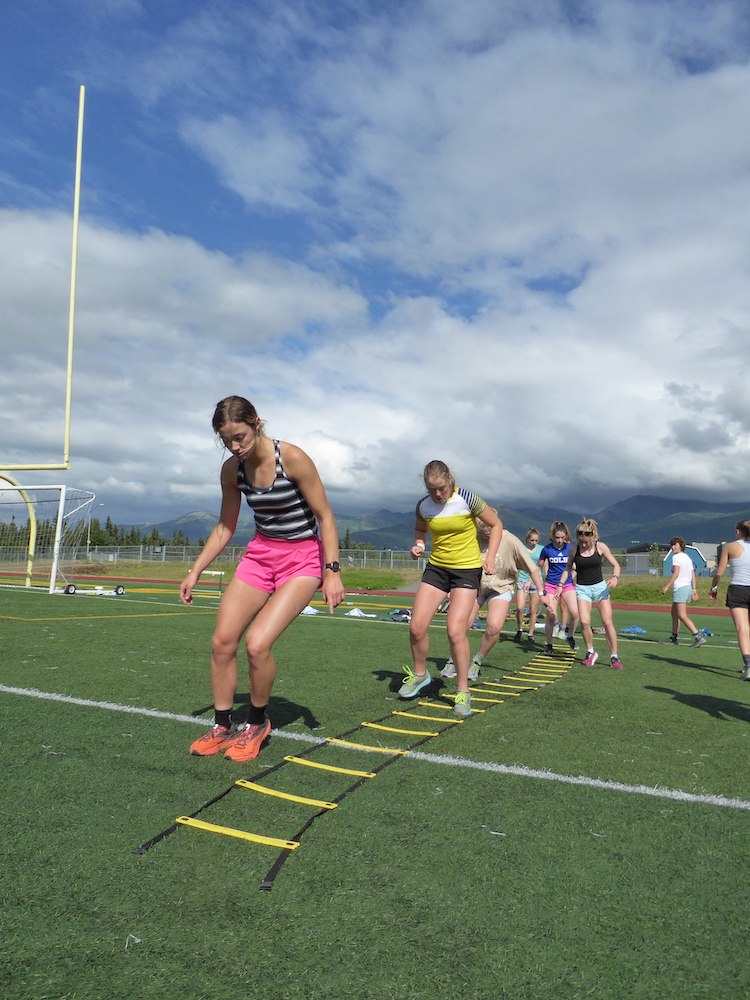
The athletes sound similar notes. Here’s Rosie Whittington-Evans, 18, a recent Palmer High graduate set to ski at Colby College this fall: “Camp’s been really fun. I really enjoyed the first dinner that we have together, which is on the first day after playing a little bit of handball. And it gives you a chance to kind of meet everybody at camp. It gives you a chance to put yourself in situations with people that you might not have talked to but have been racing against for a couple of years. And yeah, it’s been really fun.”
Whittington-Evans, who was attending her second REG camp in as many years, appreciated the bonding-specific focus of this year’s camp: “I honestly was expecting more, like, testing first, like we did last year. Instead of – I think Greta is trying to make it more speed- and practice-based and just kind of team bonding at first, which I think works really well this year at camp. And it made you feel more comfortable around the people at camp with you rather than just hopping into an uphill time trial.”
Whittington-Evans was grateful for the high-level training group around her this week, particularly after spending high school racing in the Mat-Su Valley, slightly removed from the crucible that is Anchorage high school skiing. “Being surrounded by people that are more your speed or even faster” is “really nice,” she says. “I think camp is a really important thing to have. And it really brings the community together of racing and it gives you a chance to not just have people you’re racing against but also friends that you’re racing against.”
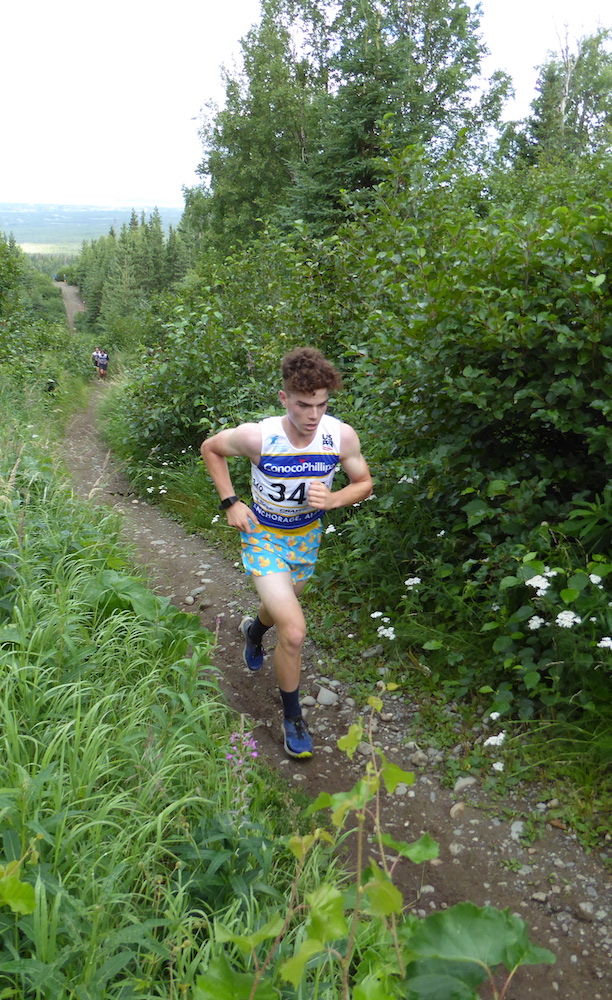
Justin Lucas (16, Service High School, first REG camp) says much the same.
“The best thing I’ve gotten out of this week is probably a couple of things: getting to meet the other teammates,” he observes. “Seeing how each other team trains, so we really get to learn from each other. Like some things you may not learn in one club, they can learn from another. It’s just a lot of interactions and learning from each other. So I think that’s my good part of this week so far.”
Coming into the camp, Lucas was expecting “a lot of hard training, lots of double training days. Which so far they’ve done,” he noted on day five of a six-day camp, “so it’s pretty much everything I had expected.”
But it had also been “pretty fun,” Lucas said. “I got to meet some of the other people from other teams. So that’s good, a good way to meet other people and get some good training.”
Lucas spent the week squarely focused on the present, but with some long-term plans in mind as well: “Right now we’re in high school, so it’s like a lot of people may focus on wanting to get first place at, say, a high school race, or State. But I think it’s more important to have your mind set on the bigger picture. Like, you may not win every race in high school. But that doesn’t mean the end of your ski career. It means you have more time to train, more time to get better. And in a few years, who knows, you could be racing World Cup.”
So does Lucas have results goals he can share?
“I’d like to hopefully make the Olympics one day, but if not, I’d like to at least make it to World Cup.”
Lucas’s long-term aspirations seem pretty plausible when you consider the context in which they were voiced. Retired athlete Nina Kemppel (four Olympics, five World Championships, 119 World Cup starts) was spotted on the Service trails during the warmup for Friday’s track workout, which occurred essentially across the street from Gus Schumacher’s house (one Olympics, one World Championships, 36 World Cup starts by age 21), in case you’d like your ready-made symbolism for the past, present, and future of American skiing. You really can get there from here.
But back to the present for the moment, there was one more test yet to administer. And so, early Saturday morning, it was time for the redoubtable Gasline Time Trial.
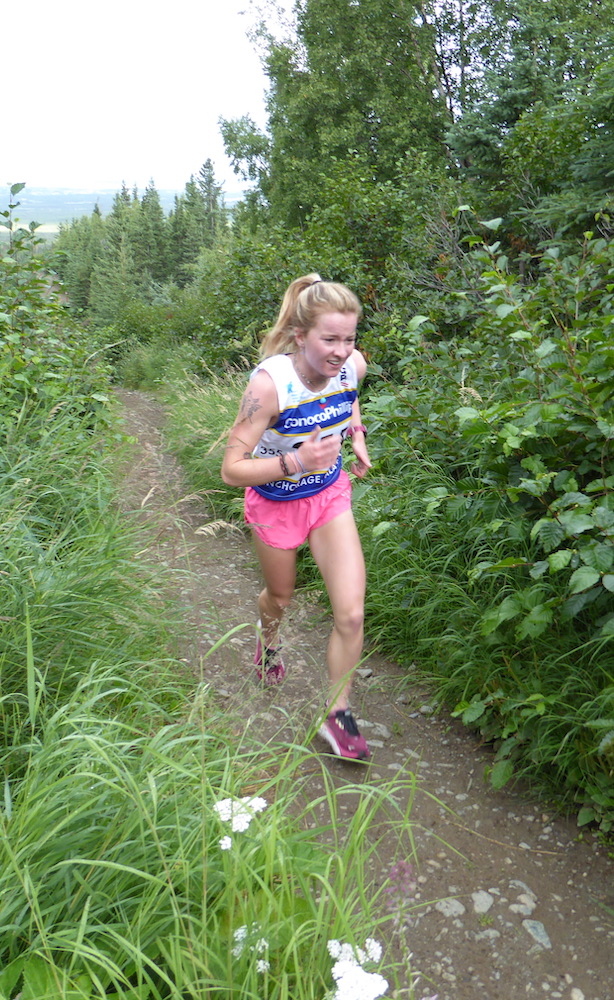
Gasline was the leitmotif of last year’s Alaska REG article, and has been an integral feature of Alaskan dryland training since at least the era when Kemppel was competing for Team Gold 2002, later and better-known as APU Nordic Ski Center. Course records are 10:20 for the women (Rosie Brennan), and low nine minutes for the men (Schumacher’s 9:12 on Strava is not the course record, but is close to it). Briefly put, you run uphill for 1.4 miles and 571 vertical feet, and it gets harder as you go along; read the 2021 article for the metaphorical implications of it all.
This year’s Gasline was the same as it ever was, but it came at the very end of camp. And so, after a bounding session, and a classic rollerski distance session with speeds, and a skate rollerski L3 session, and a strength session, and a rollerski agility course test, and a mountain bike session, and an uphill doublepole time trial, and Friday’s track session, and three presentations and two (Covid-safe outdoor) team dinners – most of which, by the way, occurred in a downpour during what will likely be the rainiest July ever in Anchorage in 100+ years of recordkeeping – on Saturday morning, it was time to run uphill. Fast.
Athletes parked at the finish at Prospect Heights at 8 a.m., then ran downhill en masse for bear protection. After an additional warmup on the Hillside trails and some instructions, a coach said “Go!” shortly before 9 a.m., and off they went from the canonical low point on Gasline.
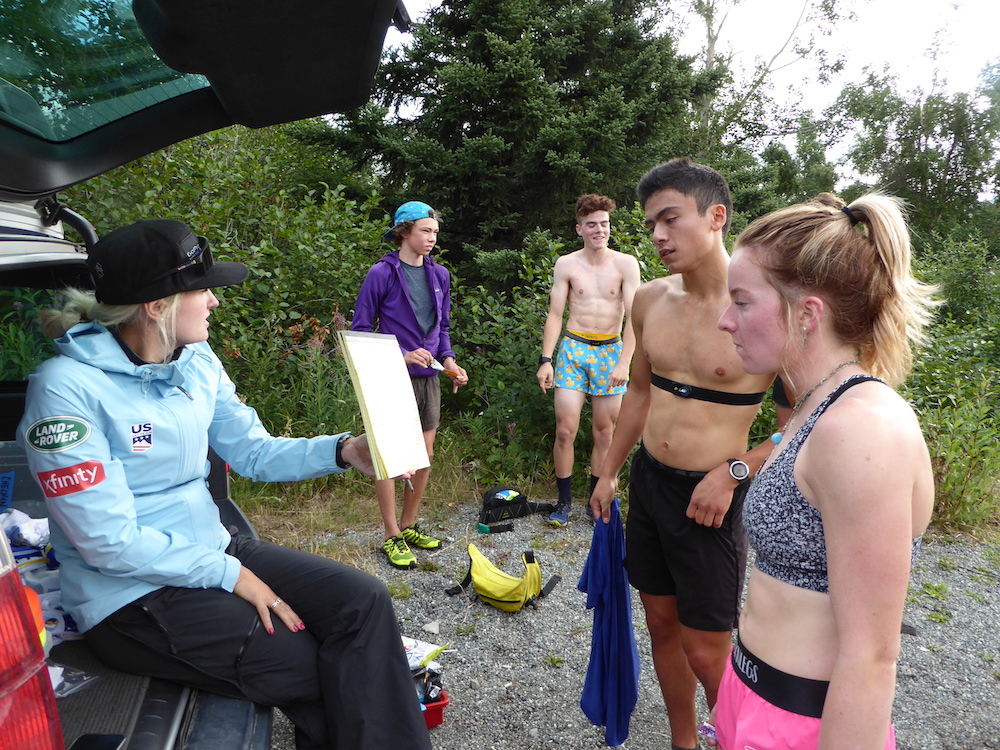
While the athletes charged up the hill, coaches and support staff sprinted to their cars to drive back to Prospect Heights in time to beat the athletes to the finish. A reporter just had time to hear parts of two songs, “Unstoppable” and “Running Up That Hill,” on the six-minute drive, which feels scripted but was the actual playlist in this cultural moment. You can’t spell “kismet” without “KMXS Anchorage,” aka Mix 103.1.
The first finishers burst off the trail onto Sidorof Lane less than ten minutes later; Ari Endestad’s PR of 9:29 was the fastest time publicly posted to Strava on the morning. For every athlete there, it marked just a handful of minutes in a multi-year journey. The future is bright, but it stands on the other side of a lot of hard work.
Related reading:
This year’s REG camps around the country: West | Central | Eastern
Gavin Kentch
Gavin Kentch wrote for FasterSkier from 2016–2022. He has a cat named Marit.


